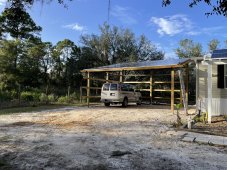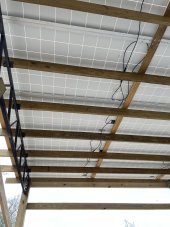timselectric
If I can do it, you can do it.
- Joined
- Feb 5, 2022
- Messages
- 18,925
Think of PVC pipe, cut in half long ways. To form a gutter. Using T's and 4 way fittings to form a grid under all seems. If panels are placed tightly against each other with weather stripping between them. All that you have to catch are the drips that find their way through. So, it wouldn't have to be very large of a pipe/gutter. The hardest part would be fitting it between the panels and support structure.Hey @timselectric ...
How would that work? Not sure I understand what you are getting at. Could you suggest a picture or link?
Actually, it's not going to work well. But, I'll leave it up, to possible inspire other ideas.
Maybe aluminum C channel would be better. So that it can be part of the support system. The seems could be brazed together.







